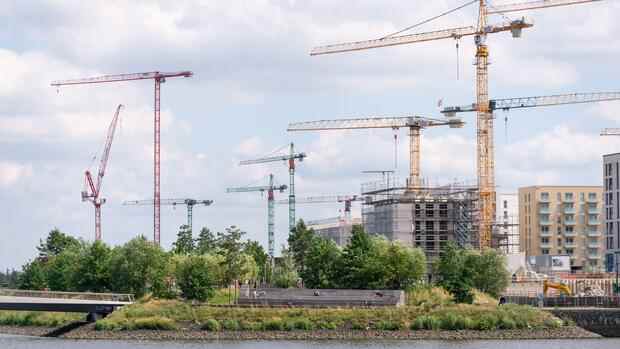Out of an average of around 350,000 approved apartments per year, not even 300,000 have actually been built in recent years.
(Photo: dpa)
According to the coalition agreement, the traffic light coalition aims to build 400,000 new apartments a year, 100,000 of which are publicly funded. With the re-establishment of an independent building ministry, the government is showing how seriously it takes the task.
However, goals and institutions alone will not create new living space. Because the problem lies less in the planning than in the implementation. Out of an average of around 350,000 approved apartments per year, not even 300,000 have actually been built in recent years. Accordingly, the so-called building overhang grew year after year. At the end of 2020, there was a building permit for a total of 780,000 apartments that had not yet been completed.
Where there is a lack of manpower and materials, there is no building. However, the instruments set out in the coalition agreement are primarily intended to provide incentives for planning apartments and simplify building permit procedures, not the construction itself.
In addition, the lack of living space is not a national issue, but a highly regional one. The total number of apartments is less important than the distribution of new buildings. In Berlin, around 475,000 people will reach retirement age in the next ten years. Most of them will continue to live in Berlin. Since there are not enough young people in the capital itself to replace the new retirees on the labor market, the gap is likely to be filled by even more immigration from other regions.
Top jobs of the day
Find the best jobs now and
be notified by email.
The situation in Berlin – as in other large cities – will therefore worsen if the rural area does not become significantly more attractive. Regional distribution is therefore the best approach to solving the problem in the medium term: 300,000 apartments in the right places would be better than 400,000 in the wrong ones.
Green multi-family houses necessary
Most of the living space is required in the metropolises or in their immediate vicinity. The main task of the new building minister, Klara Geywitz, will be to moderate the conflicting goals that arise.
Dr. Sandra Schaffner heads the research data center FDZ Ruhr at RWI – Leibniz Institute for Economic Research in Essen.
(Photo: Sven Lorenz / RWI)
Redensification is inevitable in the centers of the attractive big cities. But such efforts are met with resistance because, on the one hand, they do not correspond to the ideal of single-family houses and, on the other hand, they are problematic due to the resulting heat islands and the lack of infiltration areas.
That is why creative concepts are required, starting with green multi-family houses. In the outskirts of the cities, apartments are generally easier to build. However, this will increase car traffic, which runs counter to climate protection goals. At the same time, a much better alternative transport infrastructure is needed here. A lot to do for the Federal Minister of Construction.
More: This will be the case for homeowners and tenants from 2022.
